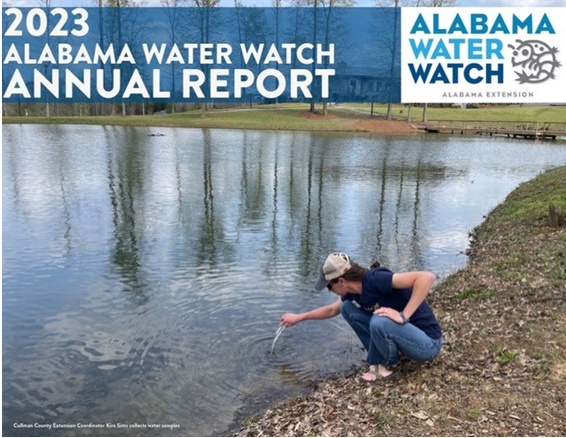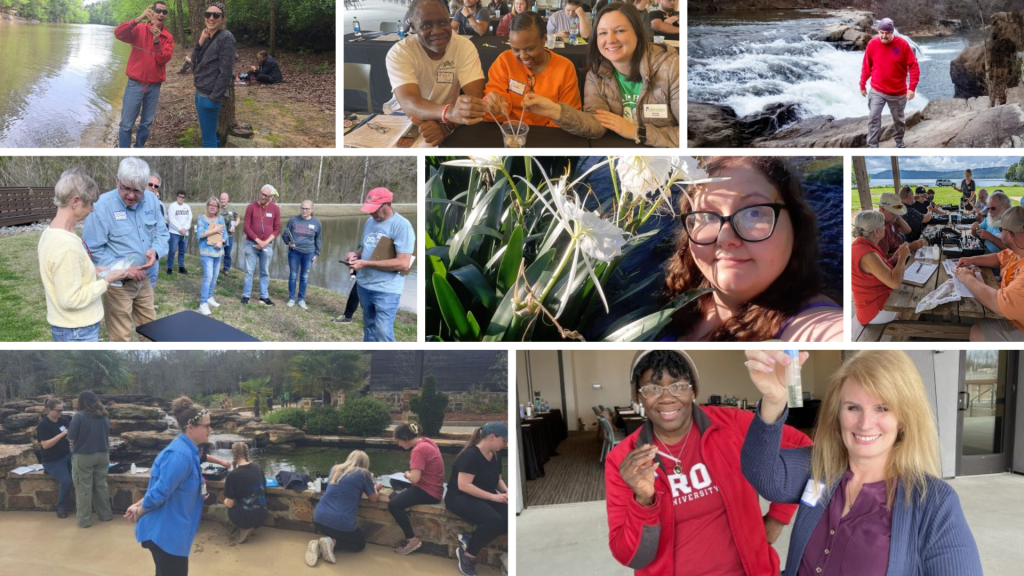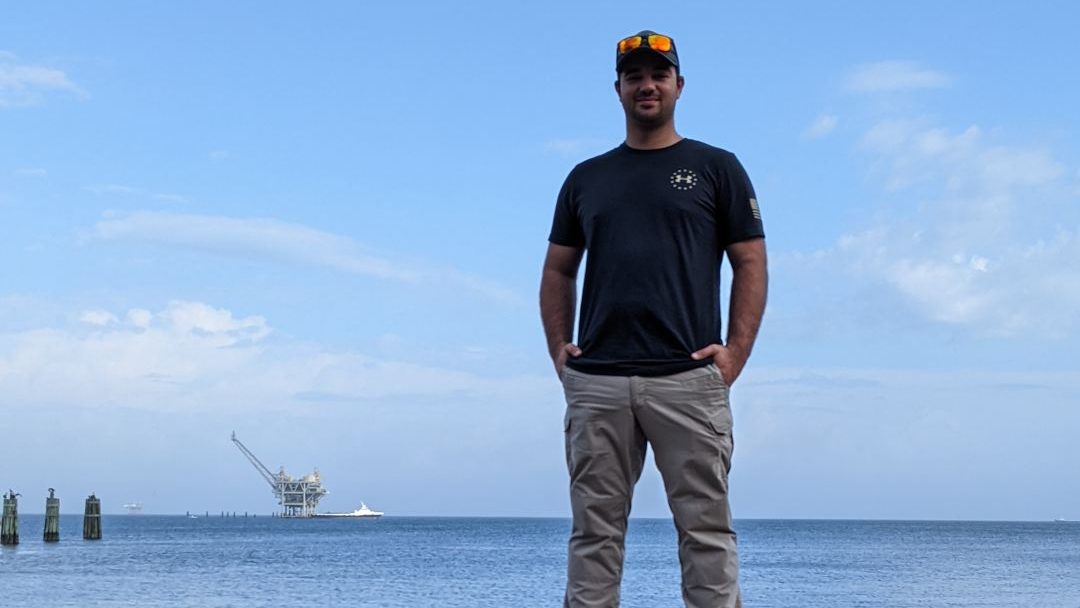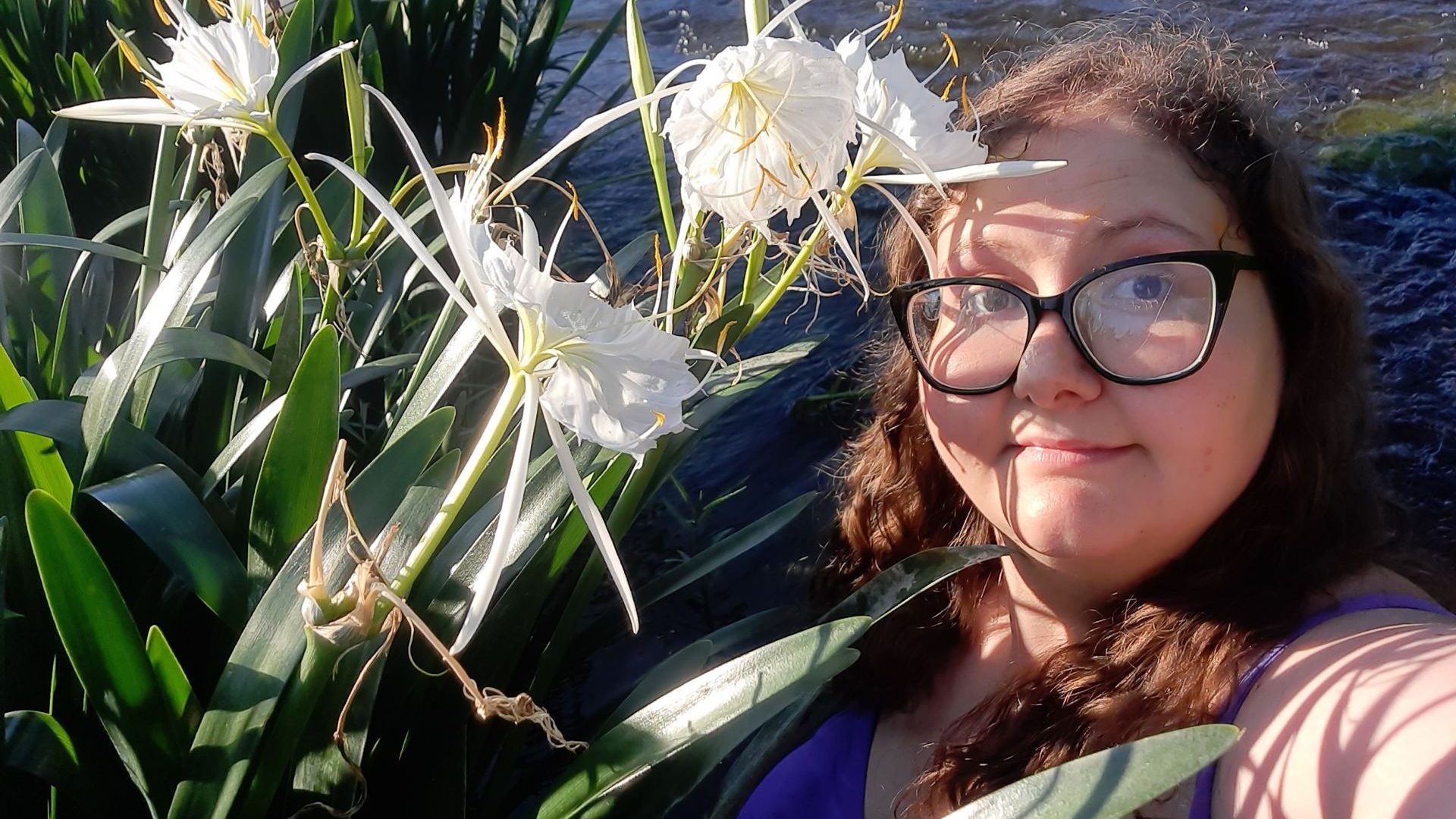
Join us for the 2024 Alabama Water Watch Annual Meeting on Saturday, June 8 at the Kreher Preserve and Nature Center in Auburn, AL! Please refer to this page for details and updates.
Continue reading “2024 Alabama Water Watch Annual Meeting”
The Official Blog of Alabama Water Watch

Join us for the 2024 Alabama Water Watch Annual Meeting on Saturday, June 8 at the Kreher Preserve and Nature Center in Auburn, AL! Please refer to this page for details and updates.
Continue reading “2024 Alabama Water Watch Annual Meeting”WE ARE CURRENTLY RECEIVING APPLICATIONS FOR THE AWW TIGER GIVING PROJECT MINI-GRANT PROGRAM!!
2024 Application: https://auburn.qualtrics.com/jfe/form/SV_daIXmygs0Vctd4O
If you are a certified AWW monitor and need some help to get started monitoring at an orphaned site or a new site, in the form of a water chemistry test kit, water chemistry reagents to refill an existing kit, or bacteria supplies, this mini-grant program is for you!
Please note: Funding is limited and demands are high for monitoring supplies among our volunteers. Please, only request materials if you are serious about your plans to monitor.
 Continue reading “AWW Tiger Giving Project, Protect Alabama Waterways, Mini-grant Program”
Continue reading “AWW Tiger Giving Project, Protect Alabama Waterways, Mini-grant Program”
Through Water Chemistry Monitoring, Volunteer Monitors test the physical and chemical characteristics of water to identify pollution sources and long-term trends in water quality. Six variables (listed below) are measured with a customized test kit and results can be compared with water quality standards that define conditions for healthy waterbodies.

Continue reading “What is Water Chemistry Monitoring?”
Through Bacteriological Monitoring, Volunteer Monitors detect levels of E. coli and other coliform bacteria in water as indicators of fecal contamination. Monitors are trained in bacteriological sampling (site selection, plating and incubating samples, and counting bacteria colonies) and water quality standards.

by Sydney Zinner
In Fall 2023, AWW was approached by Dr. Miriam Wyman with the Auburn University Office of Sustainability to do a project with her Sustainability Capstone Students in Spring 2024. The AU Water Resources Center (WRC) offers Auburn faculty opportunities for various experiences with their students to connect them with water resources, however, this was the first request to do a semester-long project with a group of students.
Capstone students were from various colleges at Auburn, including Patricia in Biosystems Engineering, Jaiden in Natural Resource Management, David in Building Science, Elizabeth in Horticulture, and Hart in Environmental Design.
Continue reading “Auburn Sustainability Students Conduct Stream Biomonitoring for Capstone Project “by Sydney Zinner
Alabama boasts a rich diversity of natural wonders, from lush forests to winding rivers. Among these treasures lies the tiny hidden world of macroinvertebrates beneath the surface of Alabama’s waters —a world teeming with life, often overlooked. What can these tiny critters tell us about water quality?

If you are familiar with Alabama Water Watch, you are likely familiar with our logo, the caddisfly. Read on to learn about how our friend the caddisfly and other creek critters can tell the story of our waters.
Continue reading “What can macroinvertebrates tell us about water quality?”By Jera Dills
In early May, Mona, Sergio, and Jera, accompanied by Jonathan Kelly with Wild Alabama, drove up to the Oakmulgee National Forest to meet with a diverse group interested in becoming bacteria and water chemistry monitors! Each attendee offered an interesting perspective on their journey to wanting to become volunteer water monitors exemplifying how watershed stewardship is an all-encompassing effort.

Check out the 2023 Alabama Water Watch Annual Report to see all of the AWWesome achievements of AWW’s Volunteer Monitors, Trainers, Association, and program partners.

VIEW 2023 ANNUAL REPORT
If you would like a text-only accessible PDF version of the report, please contact awwprog@auburn.edu
By Jera Dills
Jeff Scott is a Volunteer Monitor in the Guntersville Lake area. Read more about Jeff in his interview below!

April 22-26, 2024 is Volunteer Appreciation Week, but we love to show appreciation for our volunteers all year long! Throughout the year, we will continue to gather stories from our Volunteers statewide, and share their insights with you.

By Jera Dills
Kyle Azevedo is a Volunteer Monitor on Alabama’s Coast. Read more about Kyle in his interview below!

By Jera Dills
Gabby Dunham is a Volunteer Monitor in the Auburn area. Read more about Gabby in her interview below!
